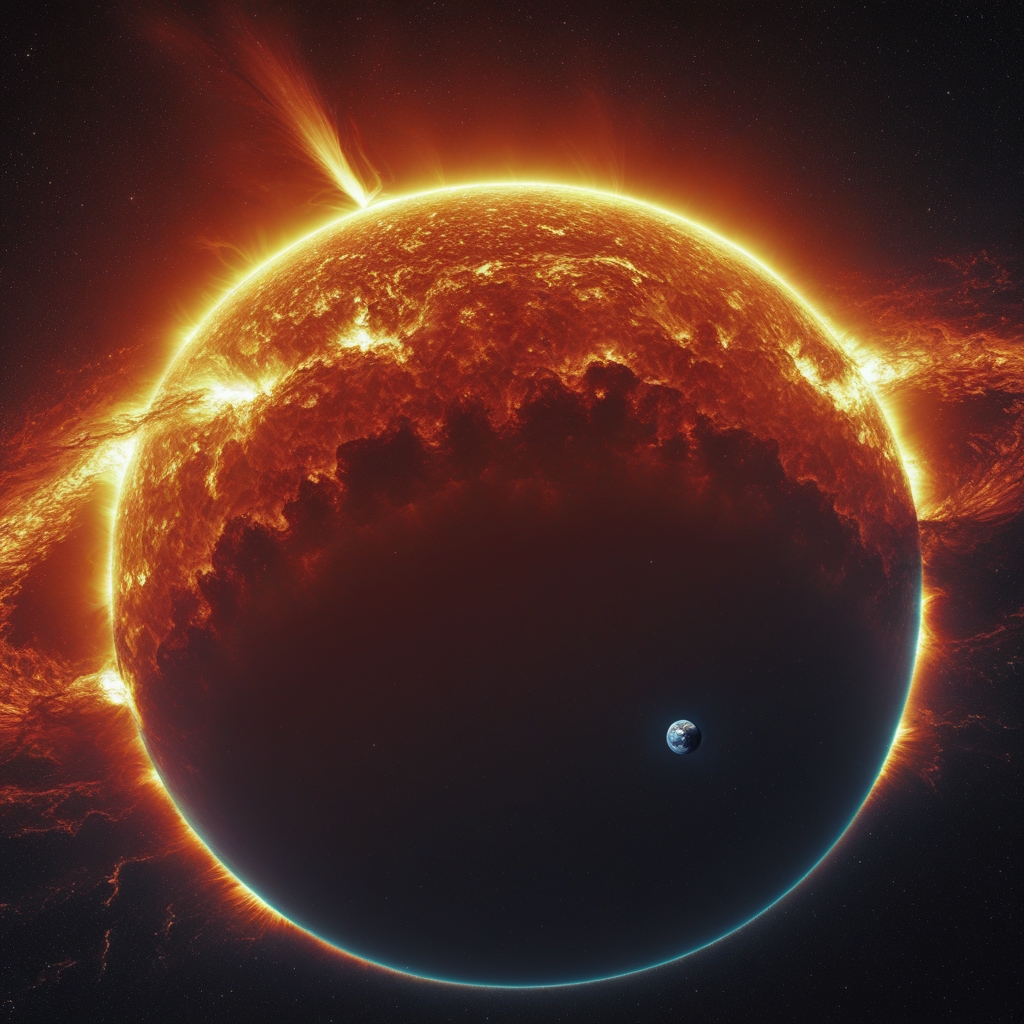
Massive 500,000-Mile Solar Coronal Hole to Impact Earth on January 31
A spectacular solar phenomenon is headed our way as scientists track a massive coronal hole spanning over 500,000 miles across the Sun's surface. This enormous dark region, nearly 60 times wider than Earth's diameter, is directing a powerful stream of solar wind toward our planet, expected to arrive on January 31, 2024. This event presents both an extraordinary scientific opportunity and a potential natural light show in the form of enhanced aurora displays.
Understanding the Massive Coronal Hole Phenomenon
What Is a Coronal Hole?
Coronal holes are regions in the Sun's outer atmosphere (corona) where the magnetic field lines open directly into space, allowing solar material to escape at high speeds. Unlike the surrounding corona, these areas appear darker because they're cooler and less dense than their surroundings. The current coronal hole is particularly noteworthy due to its exceptional size and Earth-facing position.
Size and Scale Comparison
| Object/Feature | Size (miles) | Comparison |
|---|---|---|
| Current Coronal Hole | 500,000+ | ~60x Earth's diameter |
| Earth's Diameter | 7,917 | Reference |
| Average Coronal Hole | 100,000-200,000 | 12-25x Earth's diameter |
| Sun's Diameter | 865,000 | ~109x Earth's diameter |
Formation and Characteristics
Coronal holes form when the Sun's magnetic field extends into space rather than looping back to the surface. Key characteristics include:
- Temperature: 1.5-2 million Kelvin (cooler than surrounding corona)
- Density: About 100 times less dense than surrounding regions
- Magnetic field: Open configuration allowing plasma escape
- Duration: Can persist for multiple solar rotations
- Velocity of escaping particles: 400-800 km/s
Current Observations and Measurements
Recent satellite observations from NASA's Solar Dynamics Observatory (SDO) and NOAA's GOES satellites have provided detailed measurements of this remarkable feature:
- Width: Approximately 500,000 miles
- Surface area: Over 200 billion square kilometers
- Rotation rate: Following solar rotation (~27 days)
- Position: Earth-facing, central solar disk
- Magnetic field strength: 10-20 gauss
Potential Impact on Earth
As the high-speed solar wind from the coronal hole reaches Earth, it can have several effects:
1. Geomagnetic Storms
When charged particles interact with Earth's magnetosphere, they can trigger geomagnetic storms, which may cause:
- Disruptions to GPS and radio communications
- Voltage fluctuations in power grids
- Satellite malfunctions
2. Aurora Forecast
The influx of solar wind is expected to enhance aurora activity, making them visible at lower latitudes than usual. Possible viewing locations include:
- Northern U.S. states (e.g., Michigan, Montana, Maine)
- Canada
- Scandinavia
- Parts of Northern Europe
3. Space Weather Monitoring
Agencies like NASA, NOAA, and ESA are actively monitoring the situation. If conditions intensify, alerts may be issued to protect sensitive technologies.
How to Prepare
While the event is not expected to pose a major risk, some precautions include:
- Backup essential electronic data
- Stay informed with real-time space weather updates
- If in an aurora-prone region, prepare for potential night-sky viewing
Conclusion
The arrival of this massive 500,000-mile coronal hole’s solar wind stream is a rare and significant space weather event. While it may cause minor technological disruptions, it also provides a stunning opportunity for aurora enthusiasts. Stay updated with space weather forecasts and, if conditions allow, prepare for an incredible natural light show in the sky.

